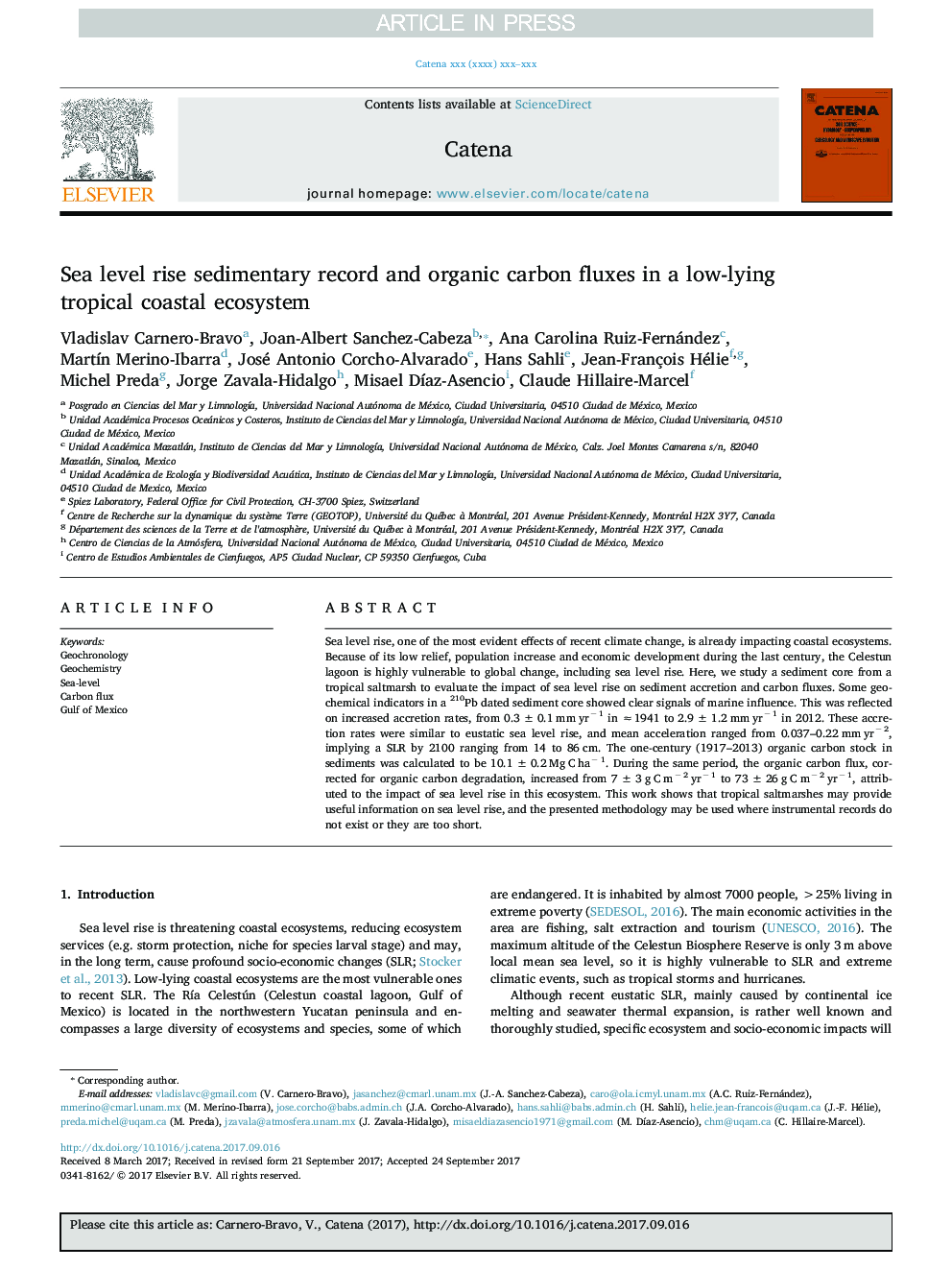| Article ID | Journal | Published Year | Pages | File Type |
|---|---|---|---|---|
| 8893784 | CATENA | 2018 | 10 Pages |
Abstract
Sea level rise, one of the most evident effects of recent climate change, is already impacting coastal ecosystems. Because of its low relief, population increase and economic development during the last century, the Celestun lagoon is highly vulnerable to global change, including sea level rise. Here, we study a sediment core from a tropical saltmarsh to evaluate the impact of sea level rise on sediment accretion and carbon fluxes. Some geochemical indicators in a 210Pb dated sediment core showed clear signals of marine influence. This was reflected on increased accretion rates, from 0.3 ± 0.1 mm yrâ 1 in â 1941 to 2.9 ± 1.2 mm yrâ 1 in 2012. These accretion rates were similar to eustatic sea level rise, and mean acceleration ranged from 0.037-0.22 mm yrâ 2, implying a SLR by 2100 ranging from 14 to 86 cm. The one-century (1917-2013) organic carbon stock in sediments was calculated to be 10.1 ± 0.2 Mg C haâ 1. During the same period, the organic carbon flux, corrected for organic carbon degradation, increased from 7 ± 3 g C mâ 2 yrâ 1 to 73 ± 26 g C mâ 2 yrâ 1, attributed to the impact of sea level rise in this ecosystem. This work shows that tropical saltmarshes may provide useful information on sea level rise, and the presented methodology may be used where instrumental records do not exist or they are too short.
Related Topics
Physical Sciences and Engineering
Earth and Planetary Sciences
Earth-Surface Processes
Authors
Vladislav Carnero-Bravo, Joan-Albert Sanchez-Cabeza, Ana Carolina Ruiz-Fernández, MartÃn Merino-Ibarra, José Antonio Corcho-Alvarado, Hans Sahli, Jean-François Hélie, Michel Preda, Jorge Zavala-Hidalgo, Misael DÃaz-Asencio, Claude Hillaire-Marcel,
